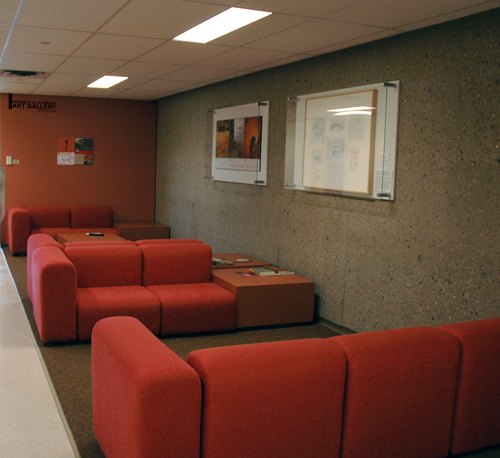
UHall, Block A, Level 8, U of L
Open Daily 24 hrs
Arthur Erickson and the University of Lethbridge
As one of Canada’s premiere Modernist architects, Arthur Erickson was commissioned to design the University of Lethbridge’s first building, one that the founders wanted to both embody the U of L’s liberal arts philosophy and have national presence. Chosen in 1967, the site of the University along the west bank of the Oldman river was embraced by Erickson and incorporated into his vision; the building was designed to traverse the rise and fall of the coulees and disappear into them upon close proximity. The building incorporates walking paths that extend underneath its base and into the coulee grasslands, allowing one to experience the nine-storey structure expanding out from the earth from various vantage points.
Erickson designed the building to serve as a complete academic institution, with labs, classrooms, offices and student residences all present within the one structure. Extensive informal meeting space for social exchanges between faculty, staff and students was also planned, and most evidently so along the 912 foot long main hallway, where he also included colour-coded seating, wall-hangings and stairwells. This suite of furniture incorporates the last surviving pieces of Erickson’s original design, and has been refurbished to accurately represent the architect’s vision.
Histories, Realities, Prospects: The Erickson Building
Scott Rogers: A public-site exhibition on the U of L campus

Histories, Realities, Prospects: The Erickson Building consists of three site-specific projects, which investigate and reinvigorate the spaces and history of Arthur Erickson’s famous building at the University of Lethbridge. Developed in response to the fortieth anniversary of the building’s design, these works encourage the public to wander through the site and explore its complicated history, its incredible construction and its role in shaping the social life of the community. Each piece in the exhibition draws upon architecture as a point of departure, developing a dialogue between the past and current state of the site and suggesting possibilities for what the campus could become. An artist-multiple brochure to help navigate the exhibition can be found at the doors of the University of Lethbridge Art Gallery.
Plan

 Plan was (has since been dismantled) located in the south coulee extending from the Erickson building to the top of the hill at the opposite side of the drainage. This location was initially scheduled to accommodate a second building similar in scale and design to the existing Erickson building. For various reasons, including structural and budgetary concerns, the project was never completed. This decision had serious consequences for both the integrity of Erickson’s design and the practicality of the existing building. Like a phantom limb marked out with a dotted line, Plan traced the perimeter where this second building was to have stood. Using survey stakes measured out roughly by the artist to approximate the building, Plan took on the effect of an official site for a new structure. The result of this official quality is the generation of rumours regarding what “could be coming”. The piece simultaneously references the history of the site and encourages people to consider the way campus might have been as they tromp through the prairie grass.
Plan was (has since been dismantled) located in the south coulee extending from the Erickson building to the top of the hill at the opposite side of the drainage. This location was initially scheduled to accommodate a second building similar in scale and design to the existing Erickson building. For various reasons, including structural and budgetary concerns, the project was never completed. This decision had serious consequences for both the integrity of Erickson’s design and the practicality of the existing building. Like a phantom limb marked out with a dotted line, Plan traced the perimeter where this second building was to have stood. Using survey stakes measured out roughly by the artist to approximate the building, Plan took on the effect of an official site for a new structure. The result of this official quality is the generation of rumours regarding what “could be coming”. The piece simultaneously references the history of the site and encourages people to consider the way campus might have been as they tromp through the prairie grass.
Breeze

![]() Breeze was (has since been dismantled) situated in the breezeway, a massive open space which cut under the Erickson building at its centre. The piece consisted of three airport windsocks installed on flag poles corresponding to the openings under the building. In the original design of the breezeway Erickson intended this area as a site for interaction, studying and socializing – essentially a commons. Unfortunately, the notoriously strong wind in the region blows through this space almost perpetually, creating a wind tunnel effect. The possibility of carrying on a conversation in the breezeway, let alone studying, is often difficult. The windsocks drew attention to this scenario with a tongue-in-cheek commentary suggestive that the breezeway is perhaps more hospitable for the wind than people. But far from a purely cynical gesture, the piece also draws attention to one of the most under utilized and impressive elements of Erickson’s design. By making the wind visible and drawing people down to the breezeway, the socks encouraged viewers to examine the relationship between the physical presence of the building and its natural surroundings.
Breeze was (has since been dismantled) situated in the breezeway, a massive open space which cut under the Erickson building at its centre. The piece consisted of three airport windsocks installed on flag poles corresponding to the openings under the building. In the original design of the breezeway Erickson intended this area as a site for interaction, studying and socializing – essentially a commons. Unfortunately, the notoriously strong wind in the region blows through this space almost perpetually, creating a wind tunnel effect. The possibility of carrying on a conversation in the breezeway, let alone studying, is often difficult. The windsocks drew attention to this scenario with a tongue-in-cheek commentary suggestive that the breezeway is perhaps more hospitable for the wind than people. But far from a purely cynical gesture, the piece also draws attention to one of the most under utilized and impressive elements of Erickson’s design. By making the wind visible and drawing people down to the breezeway, the socks encouraged viewers to examine the relationship between the physical presence of the building and its natural surroundings.
Flow

 Running through the A stairwell between the 5th and 8th floors are the series of site-specific paintings titled Flow. These four large scale works depict various stages of the Erickson building’s history, from some of Erickson’s earliest concept drawings to the present day campus. The painting on the final floor of the stairwell goes beyond these conditions to propose a future campus full of fantastical utopian/dystopian plans for the U of L in the year 2267. Intended as both historical document and commentary on University politics and planning, Flow intertwines historical documentation with subjective additions and manipulations. Because the A stairwell is the primary route to the offices of senior administrative staff and the president of the university, these paintings also serve as a wry critique of institutional power and its affect on the lives of those who work and study within officially approved architecture.
Running through the A stairwell between the 5th and 8th floors are the series of site-specific paintings titled Flow. These four large scale works depict various stages of the Erickson building’s history, from some of Erickson’s earliest concept drawings to the present day campus. The painting on the final floor of the stairwell goes beyond these conditions to propose a future campus full of fantastical utopian/dystopian plans for the U of L in the year 2267. Intended as both historical document and commentary on University politics and planning, Flow intertwines historical documentation with subjective additions and manipulations. Because the A stairwell is the primary route to the offices of senior administrative staff and the president of the university, these paintings also serve as a wry critique of institutional power and its affect on the lives of those who work and study within officially approved architecture.
– Scott Rogers, 2007
Walk images
Artist Bio
Scott Rogers is a visual artist and writer currently based in Calgary, Alberta. His work has been exhibited throughout Canada in the form of installations and touring video festivals. Upcoming group exhibitions include Berliner Kunstsalon in Germany, the TULCA festival in Galway, Ireland, Grow-op (with the Arbour Lake Sghool) at the Art Gallery of Calgary and a two-person exhibition at Eastern Edge Gallery in St. John’s, Newfoundland. His writing has been published in exhibition invitations, the journal UnderCurrents from York University’s Faculty of Environmental Studies and in FFWD Weekly. Scott is a founding member and collaborator with The Arbour Lake Sghool, a suburban artist collective in Calgary.


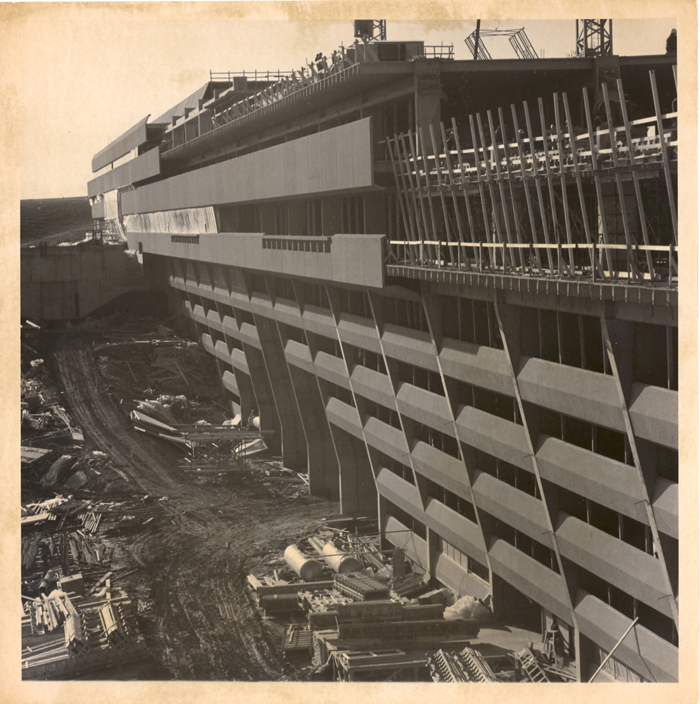
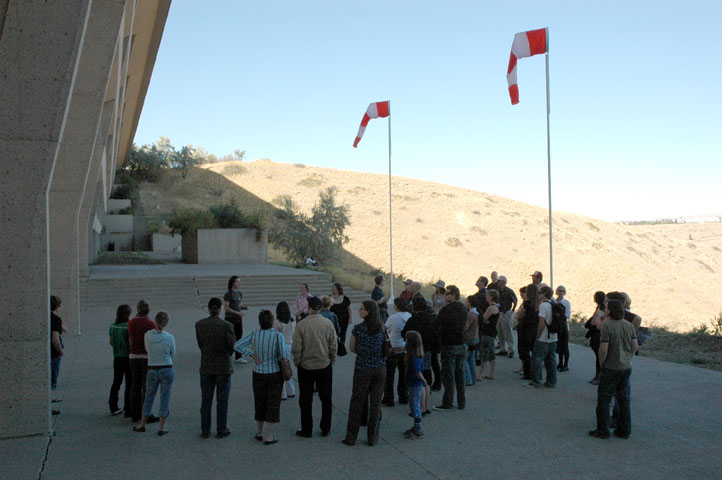
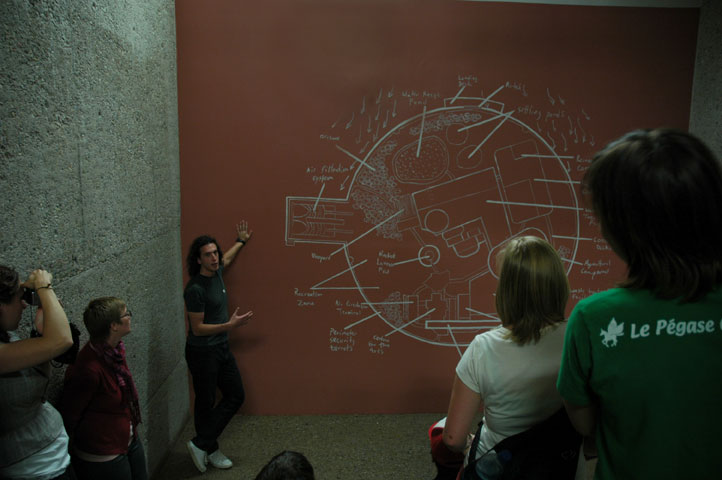
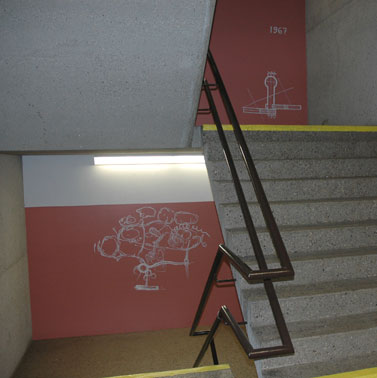
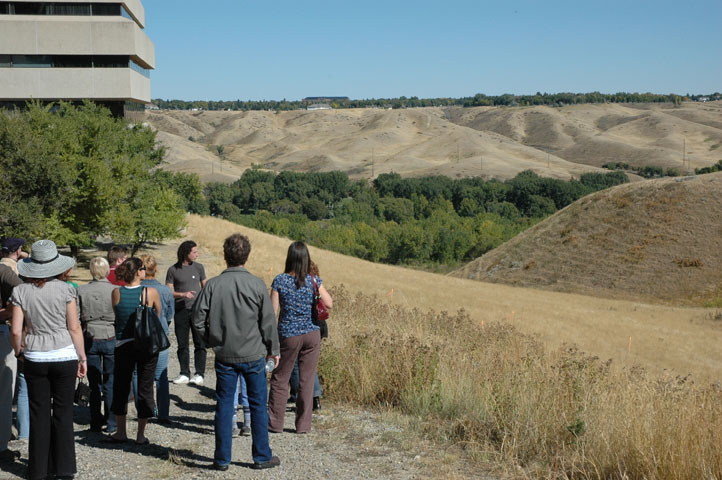
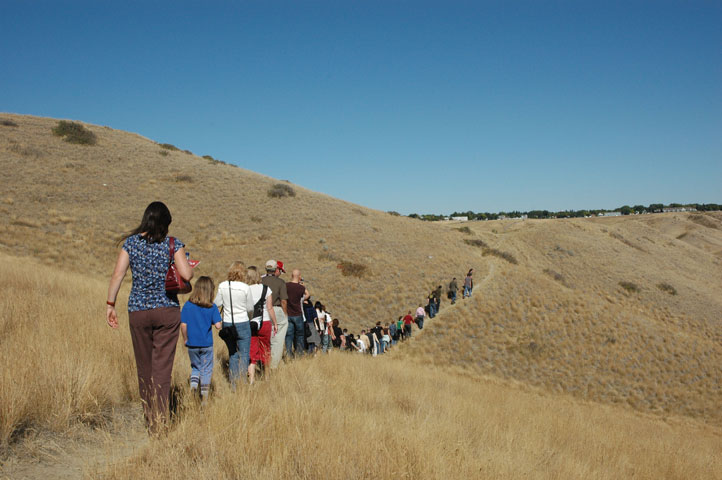
42 thoughts on “Arthur Erickson Suite”